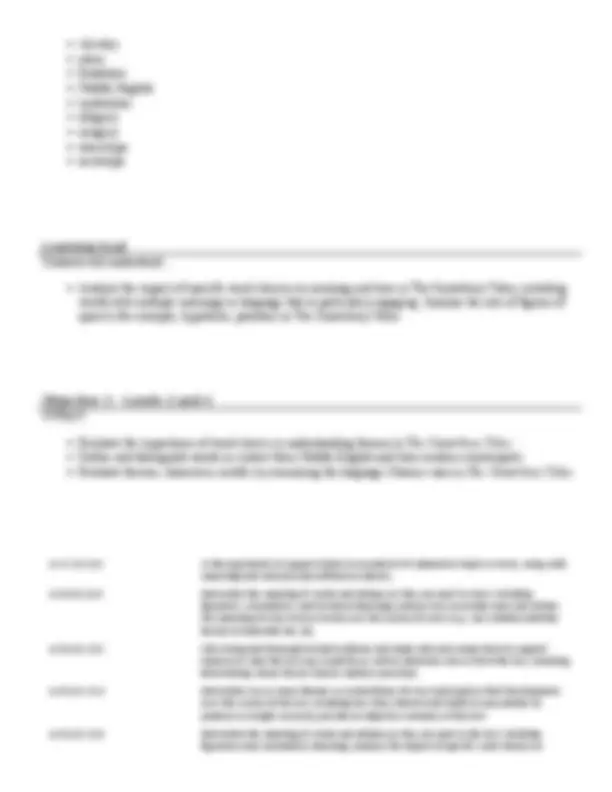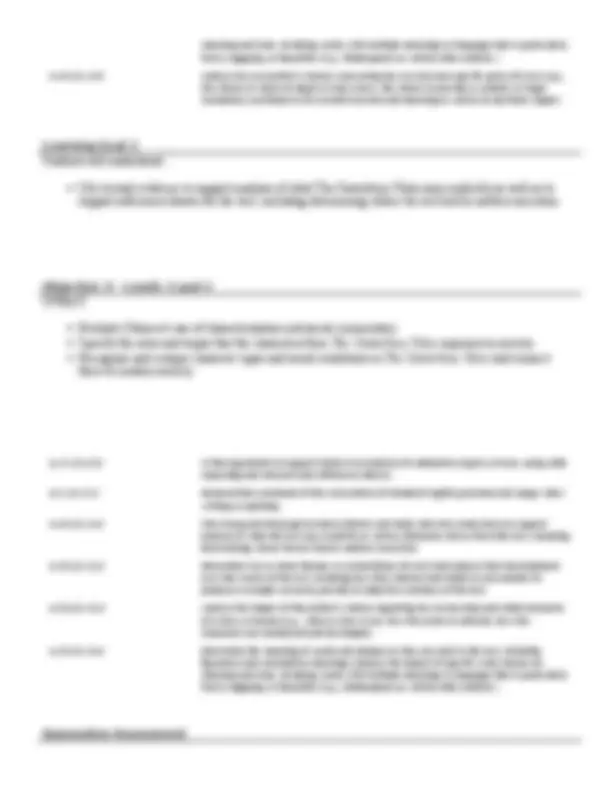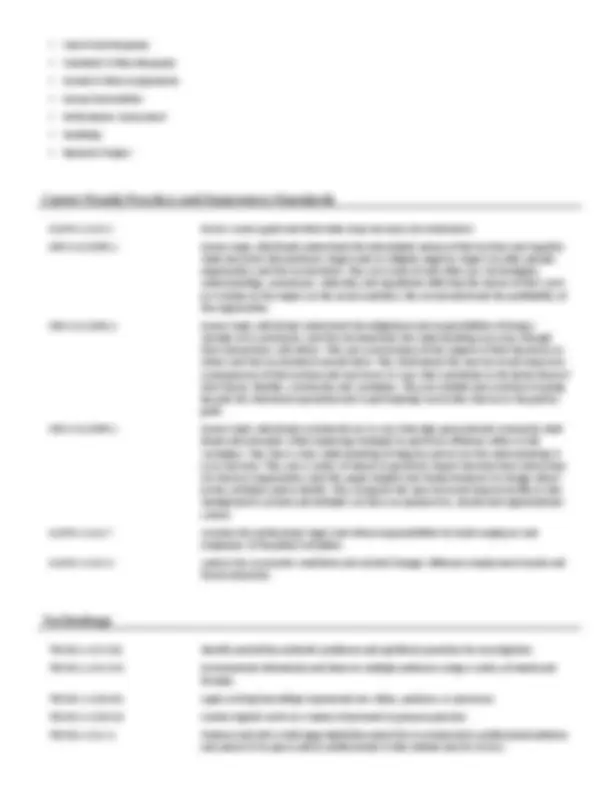





Study with the several resources on Docsity

Earn points by helping other students or get them with a premium plan


Prepare for your exams
Study with the several resources on Docsity

Earn points to download
Earn points by helping other students or get them with a premium plan
Community
Ask the community for help and clear up your study doubts
Discover the best universities in your country according to Docsity users
Free resources
Download our free guides on studying techniques, anxiety management strategies, and thesis advice from Docsity tutors
A 2-week English Language Arts course focused on reading and analyzing Geoffrey Chaucer's The Canterbury Tales. Students will explore the historical context, societal satire, and literary elements of the text, including character analysis, satire, and figurative language. They will also learn to make inferences based on textual evidence and connect Chaucer's work to modern society.
What you will learn
Typology: Study notes
1 / 7

This page cannot be seen from the preview
Don't miss anything!




Content Area: English Language Arts Course(s): Language Arts Literacy IV Time Period: 2 weeks Length: 2 Weeks Status: Published
meaning and tone, including words with multiple meanings or language that is particularly fresh, engaging, or beautiful. (e.g., Shakespeare as well as other authors.) LA.RL.11-12.5 Analyze how an author’s choices concerning how to structure specific parts of a text (e.g., the choice of where to begin or end a story, the choice to provide a comedic or tragic resolution) contribute to its overall structure and meaning as well as its aesthetic impact.
LA.W.11-12.1 Write arguments to support claims in an analysis of substantive topics or texts, using valid reasoning and relevant and sufficient evidence. LA.L.11-12.1 Demonstrate command of the conventions of standard English grammar and usage when writing or speaking. LA.RL.11-12.1 Cite strong and thorough textual evidence and make relevant connections to support analysis of what the text says explicitly as well as inferences drawn from the text, including determining where the text leaves matters uncertain. LA.RL.11-12.2 Determine two or more themes or central ideas of a text and analyze their development over the course of the text, including how they interact and build on one another to produce a complex account; provide an objective summary of the text. LA.RL.11-12.3 Analyze the impact of the author’s choices regarding how to develop and relate elements of a story or drama (e.g., where a story is set, how the action is ordered, how the characters are introduced and developed). LA.RL.11-12.4 Determine the meaning of words and phrases as they are used in the text, including figurative and connotative meanings; analyze the impact of specific word choices on meaning and tone, including words with multiple meanings or language that is particularly fresh, engaging, or beautiful. (e.g., Shakespeare as well as other authors.)
CAEP.9.2.12.C.1 Review career goals and determine steps necessary for attainment. CRP.K-12.CRP5.1 Career-ready individuals understand the interrelated nature of their actions and regularly make decisions that positively impact and/or mitigate negative impact on other people, organization, and the environment. They are aware of and utilize new technologies, understandings, procedures, materials, and regulations affecting the nature of their work as it relates to the impact on the social condition, the environment and the profitability of the organization. CRP.K-12.CRP1.1 Career-ready individuals understand the obligations and responsibilities of being a member of a community, and they demonstrate this understanding every day through their interactions with others. They are conscientious of the impacts of their decisions on others and the environment around them. They think about the near-term and long-term consequences of their actions and seek to act in ways that contribute to the betterment of their teams, families, community and workplace. They are reliable and consistent in going beyond the minimum expectation and in participating in activities that serve the greater good. CRP.K-12.CRP9.1 Career-ready individuals consistently act in ways that align personal and community-held ideals and principles while employing strategies to positively influence others in the workplace. They have a clear understanding of integrity and act on this understanding in every decision. They use a variety of means to positively impact the directions and actions of a team or organization, and they apply insights into human behavior to change others’ action, attitudes and/or beliefs. They recognize the near-term and long-term effects that management’s actions and attitudes can have on productivity, morals and organizational culture. CAEP.9.2.12.C.7 Examine the professional, legal, and ethical responsibilities for both employers and employees in the global workplace. CAEP.9.2.12.C.4 Analyze how economic conditions and societal changes influence employment trends and future education.
TECH.8.1.12.F.CS1 Identify and define authentic problems and significant questions for investigation. TECH.8.1.12.C.CS2 Communicate information and ideas to multiple audiences using a variety of media and formats. TECH.8.1.12.B.CS1 Apply existing knowledge to generate new ideas, products, or processes. TECH.8.1.12.B.CS2 Create original works as a means of personal or group expression. TECH.8.1.12.A.2 Produce and edit a multi-page digital document for a commercial or professional audience and present it to peers and/or professionals in that related area for review.
SOC.9-12.1.1.2 Analyze how change occurs through time due to shifting values and beliefs as well as technological advancements and changes in the political and economic landscape. SOC.9-12.1.3.3 Gather relevant information from multiple sources representing a wide range of views (including historians and experts) while using the date, context, and corroborative value of the sources to guide the selection.